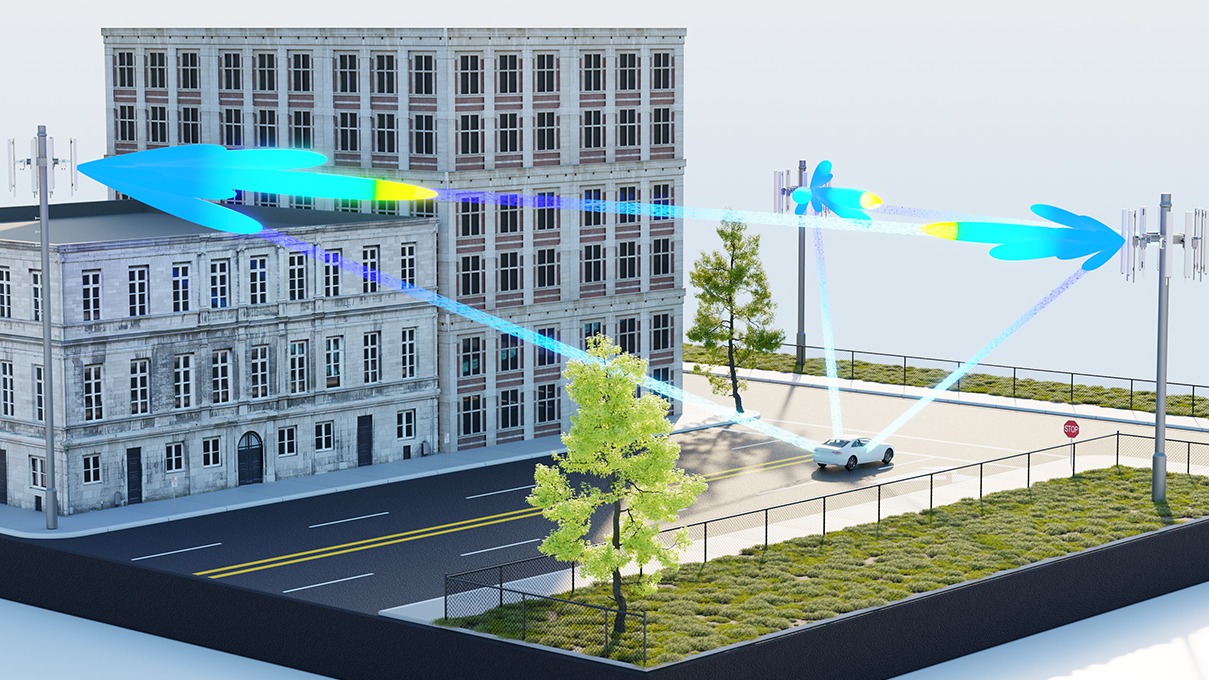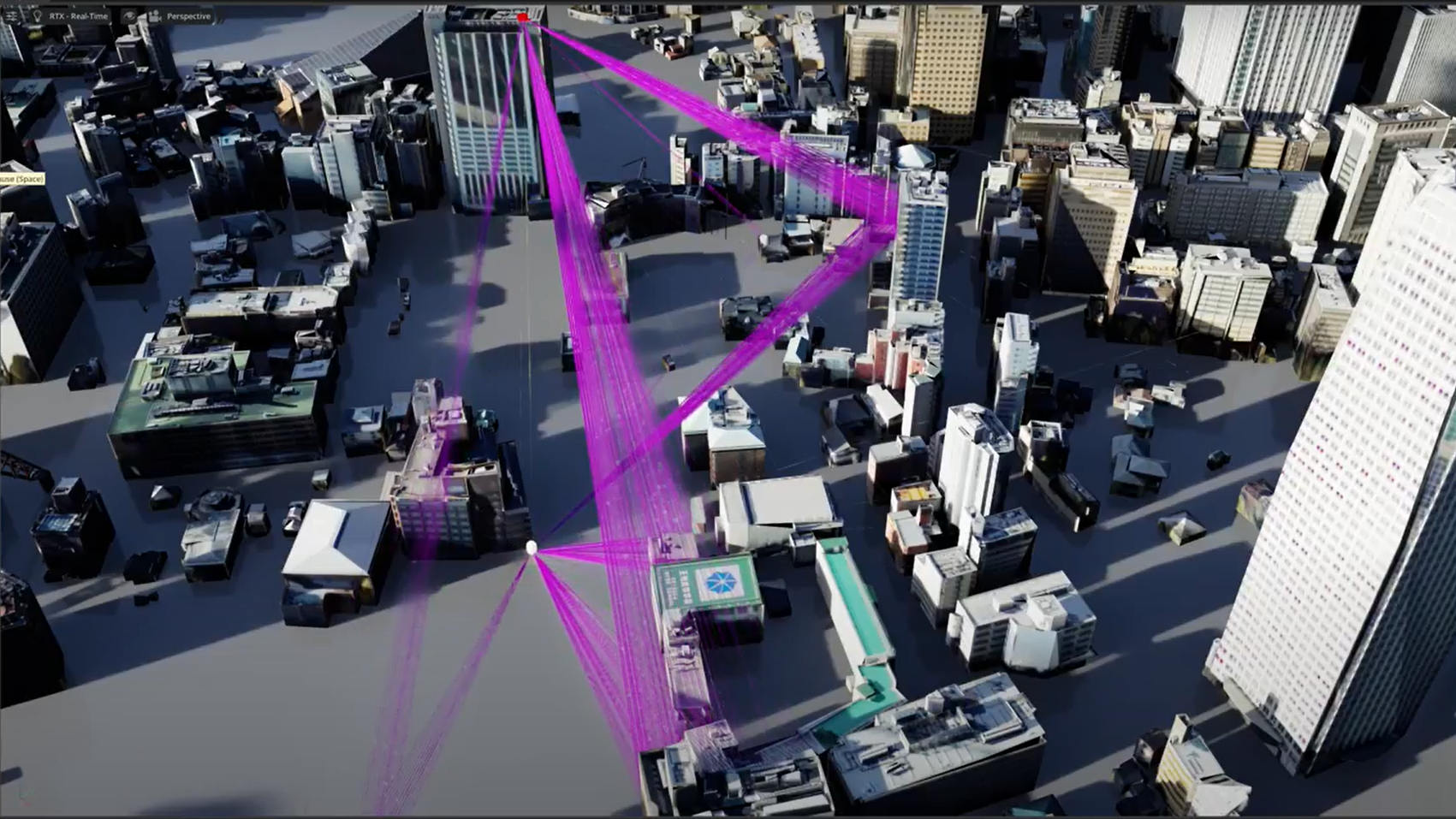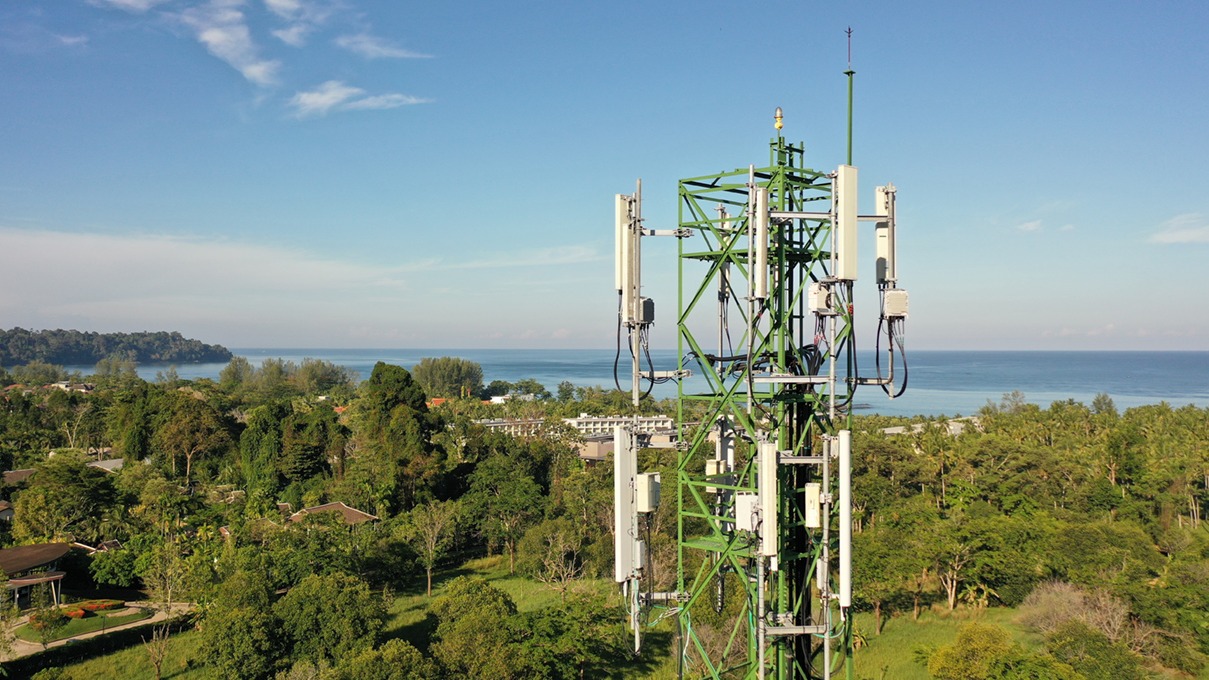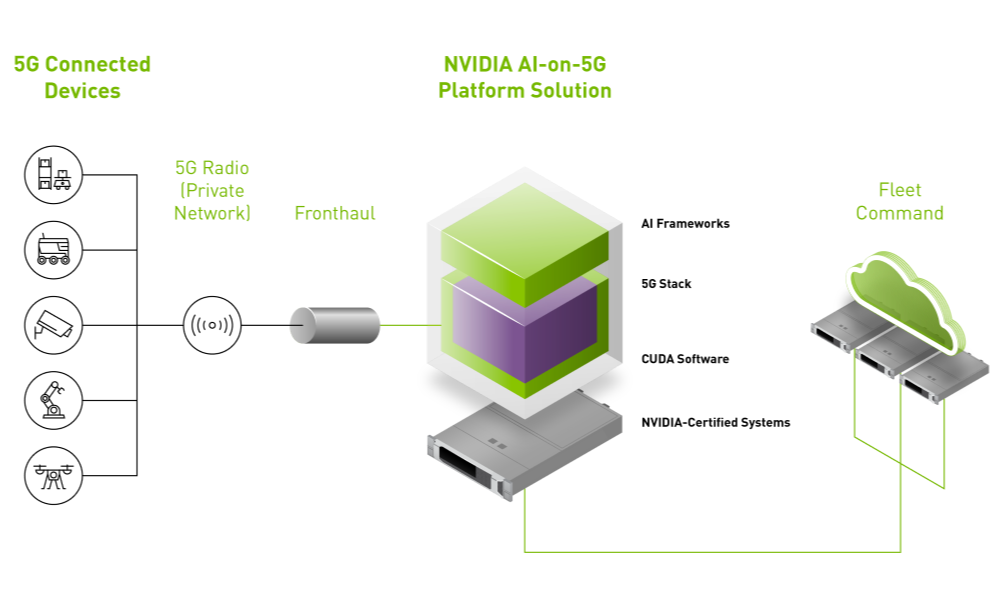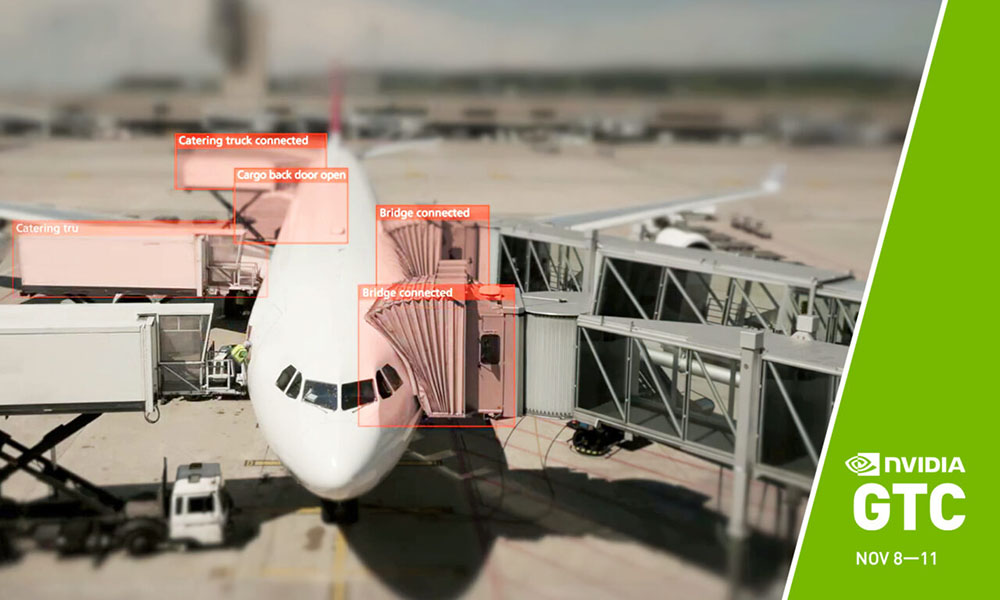The telecom industry has been pivotal in driving digital transformation across society. For over a century, and from fixed to mobile communications, the industry has incubated and nurtured the technologies that provide the connectivity fabric for people across the globe. In the 5G era, this pivotal role now includes providing untethered and ubiquitous high-speed data connectivity for a multitude of always-connected end users and compute nodes.
Thanks to mobile-enabled pervasive connectivity, IHS Markit estimates that the 5G-enabled value chain will generate over $13 trillion of gross output across industrial sectors and enterprise markets by 2035 (Figure 1). GSMA forecasts that by 2025 the mobile telecom industry alone will contribute $4.9 trillion to the global economy (about 5% of global GDP). To learn more, see The 5G Economy in a Post-COVID-19 Era and The Mobile Economy 2022.
Continued success for the telecom industry, and society in general, cannot be taken for granted. Historically, much of the industry’s success can be attributed to the concerted approach to fixing key challenges with technology, standards, and economic and policy innovations. This will continue to be the case in 2023 and beyond, as telcos and other existing and new industry stakeholders coordinate to address the industry’s key challenges.
This post highlights five key challenges facing the industry and explores how the AI-powered telco is using the two technology building blocks, AI and accelerated computing, to address the challenges and drive growth. Finally, it explains how NVIDIA is providing the technology platforms for AI and accelerated computing in telecom.
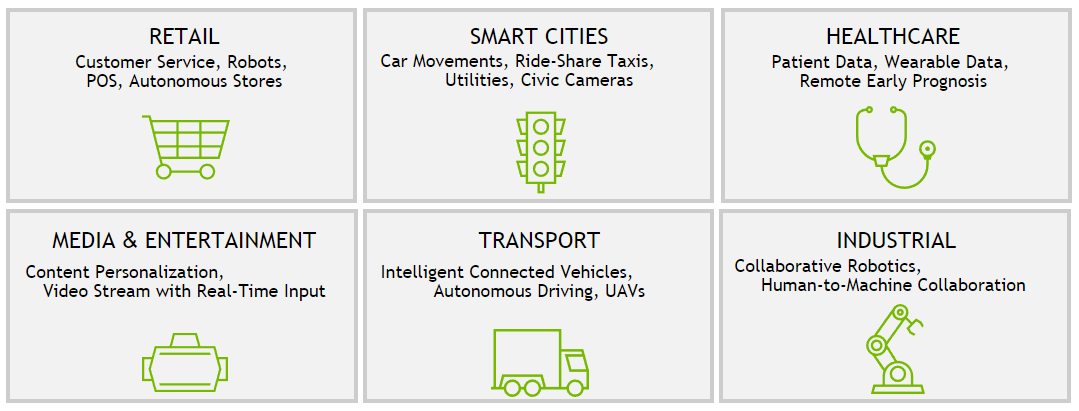
Top five telecom industry challenges
Across the industry and among stakeholders, different viewpoints exist regarding the top challenges facing telcos. It is helpful to focus on the issues that matter most to decision makers in the industry. This section discusses the five top challenges facing telcos as they strive to unlock the 5G-era opportunities in the industry. AI and accelerated computing provide the foundational building blocks to address these challenges. More specifically, AI provides the software toolkits while accelerated computing provides the hardware complement.
1. Generate new revenue
One fundamental challenge facing telcos is generating new revenue from their fiber and 5G investments in particular. 5G is the industry’s shiniest asset, and will drive 85% of the $620 billion mobile sector CapEx between 2022 and 2025. Yet there is a growing gap between expectations on 5G value creation compared to the reality of its commercialization, especially with the slow adoption of enterprise / private 5G and the cloudification of service delivery outside the remit of telcos.
Put simply, without adequate 5G monetization, the industry’s falling return on capital employed (ROCE) will only worsen. For example, Ofcom notes that the UK average industry ROCE declined between 2017 and 2020. See Ofcom’s Future Approach to Mobile Markets for more details.
Addressing the monetization challenge requires a two-pronged approach to unlock both the consumer and enterprise markets. For consumers, selling fiber and 5G experiences such as gaming, immersive entertainment, and AI services, either directly or together with partners, is already becoming well established.
For enterprises, building out edge computing, introducing more 5G devices, and greater emphasis on solving business needs are beginning to make a difference. To learn more, see NVIDIA and Friends Build a 5G VR Workspace for Engineers.
2. Enhance customer experience
Given the high fixed CapEx, OpEx, and Spectrum costs in the telecom industry, together with reliance on economies of scale, winning new customers (or not losing existing customers) is of utmost strategic priority. In an increasingly mature market, and with low population growth, an industry open secret is that having the best customer experience may win you some customers but having the worst customer experience will certainly lose you many customers. Indeed, in a 2022 survey in the U.S., Techsee reports churn levels of 46% in the telecom industry, the highest of all industries surveyed.
Telcos strive to deliver a good customer experience to improve their customer acquisition and churn management. Telcos are improving their customer relationships by investing in network quality, AI-driven data analytics, and conversational AI for customer engagement (avatars and chatbots, for example).
3. Reduce operational complexity and cost
Operational complexity is a significant challenge for telcos. The cost implication of this complexity can impose large financial strains. For example, telcos are obligated to maintain the infrastructure for voice services, whereas telephony is becoming less and less of a revenue driver.
Telcos are trying to manage complexity and improve operational efficiency through a variety of means. At the network level, these include real-time optimization of network parameters, traffic routing, and fault prediction and prevention. At the operational level, these include:
- better management of legacy infrastructure, such as shutting down 2G/3G networks
- embracing a cloud-first approach
- intelligent automation of operations, including business support systems (BSS) and operations support systems (OSS)
In addition, applying automation and AI to solutions that were traditionally manual is also a top priority. At the business level, this includes retraining and retaining staff with the right skills, managing energy sourcing (especially by incorporating renewables into the energy mix), and in some cases embracing a more asset-light strategy by divesting infrastructure.
4. Improve energy and security resilience
As a critical national infrastructure with stringent government oversight, the resilience of the telecom infrastructure attracts heightened political concern. Routine operational downtime can have serious political and economic implications around the world, from Canada and the Netherlands to South Korea and the UK. Energy efficiency (including with regard to sustainability) and security (including cybersecurity and supply chain diversity) are the two largest threats to the resilience of telecom infrastructure.
In the face of global geopolitical tensions, energy costs have become the proverbial “elephant in the room” for telcos, prompting strong action on energy saving schemes and diversification into renewables. In a related manner, about 80% of the global mobile industry by revenue is supporting commitments to cut greenhouse gas emissions. For more details, see Engaging with the Mobile Industry on Climate Action.
Similarly, geopolitics is stoking fears about cybersecurity. These are now flowing back into industry activities (a focus on disaggregation of software and hardware for Open RAN, for example) and driving political intervention into telecom equipment sourcing.
5. Achieve better RAN TCO
The RAN is the costliest part of the mobile network today, and is projected to account for as much as 65% of the overall network total cost of ownership (TCO) in the 5G era. In the past, the primary goal of RAN evolution was performance improvement. Three additional goals are now equally important:
- programmability to enable flexibility and easier upgradability
- open standards and interfaces to support disaggregation of software and hardware recognized as the future of the RAN
- infrastructure that is agnostic and can be co-located on COTS hardware with other revenue-generating AI workloads
While the number of RAN sites is projected to nearly double to over 17 million by 2027, the reality is that most RAN sites have an average utilization below 25%. This means that the strategic importance of the RAN presents a huge opportunity for new ideas on how to plan, deploy, manage, and monetize the RAN.
Both AI and accelerated computing have a significant role to play in this process. In particular, accelerated computing is a prerequisite for a better RAN TCO, as it is the only means of delivering the high-performance compute required for 5G/6G physical layer processing. For more details, see NVIDIA Crashes Intel’s Open RAN Monopoly with x86 Bypass.
Enabling the AI-powered telco
AI and accelerated computing provide key technology tools for the AI-powered telco to address key industry challenges. NVIDIA is providing these tools with a portfolio of technology platforms. Four product pillars bring together products and solutions that are already being commercialized for telcos and products that are still in development (Figure 2).
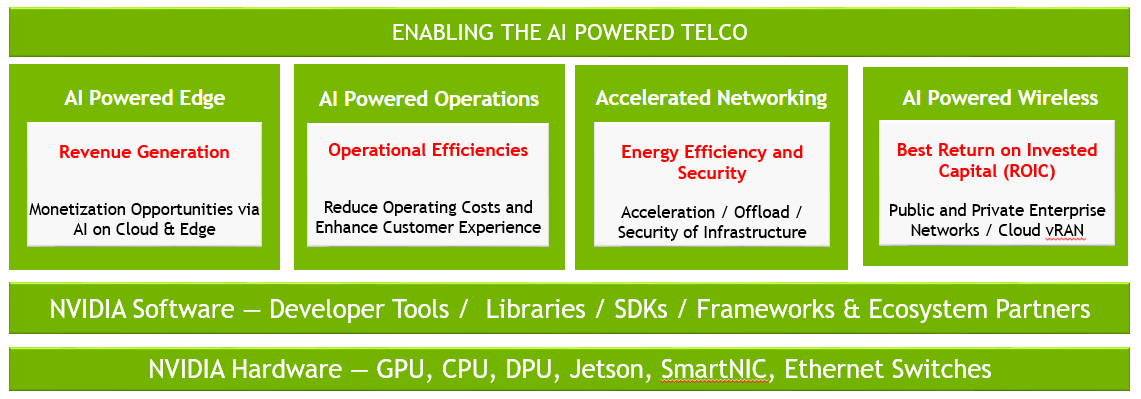
Each of the four pillars (detailed below) offers NVIDIA partners and customers a package that includes NVIDIA hardware and software, tailored to address their individual needs.
- AI Powered Edge: Focusing on driving new monetization opportunities with cloud and Edge AI. These include industry-led use cases, enabling new workloads in computer vision, cloud gaming and IoT, and incubating an ecosystem of NVIDIA-certified telco partners.
- AI Powered Operations: Focusing on solutions that deliver operational efficiencies to telcos. These include big data tools and platforms, AIOps, and AI customer experience tools.
- Accelerated Networking: Focusing on using acceleration/offload plus security to improve energy efficiency and modernization of the infrastructure. This includes network virtualization with NFVI, virtual network functions for 5G workloads, and AI-powered security solutions.
- AI Powered Wireless: Focusing on developing a full-stack, software-defined, programmable, and GPU-accelerated 5G vRAN based on the NVIDIA Aerial SDK. This includes deploying NVIDIA Aerial for public 5G networks; AI-on-5G to combine AI and 5G on the same enterprise computing platform; and ongoing research, development, and ecosystem engagement for 6G.
How AI is transforming telecom operations
AI is the most significant technology force of the time, and its impact on the telecom industry is only just starting. As detailed below and shown in Figure 3, there are four important ways that AI is impacting the telecom industry and how telcos are adopting AI to unlock opportunities and address challenges. These can impact both the bottom line (through TCO improvement by optimizing CapEx and OpEx) or the top line (by generating new revenue). See The AI-Powered Telco to learn more.
1. Improved efficiency to telecom operations
AI delivers improved operational efficiency through the terabytes of data collected every day—from network elements to customer interactions—and through the resulting insights. These insights are used for predictive maintenance and capacity planning; to maximize network performance and user experience; and to combat cyberthreats and optimize services.
For example, AT&T is using NVIDIA RAPIDS to process trillions of records to enable teams to optimize networks and boost customer satisfaction while saving costs. See Speed Dialer: How AT&T Rings Up New Opportunities With Data Science to learn more.
2. Better customer experiences
AI provides actionable insights on behaviors that can improve the customer experience, whether in the network, at the retail outpost, or in the call center. Through technologies such as conversational AI, avatars, and recommender systems, AI can enhance customer engagements with voice agents and personalized interactions, including payment alerts and promotional offers.
T-Mobile is using NVIDIA conversational AI to power real-time speech-to-text solutions in its contact centers, as detailed in Speech AI for Award-Winning Customer Care. And Cloudera is using big data analytics for customer behavioral modeling for telcos, as detailed in Accelerating Customer Behavioral Modeling in Telcos.
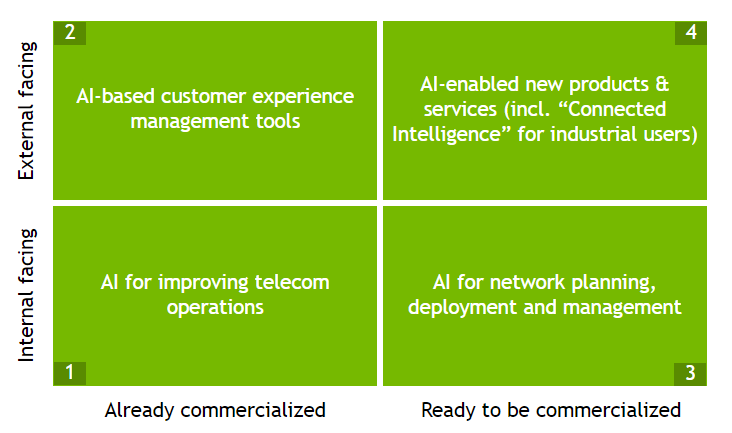
3. A more effective telecom infrastructure
AI is making the task of building an effective infrastructure easier in several ways, including:
- improving 5G/6G planning with digital twin networks such as NVIDIA Omniverse for digital twins with Ericsson and Heavy.AI
- service provisioning in the 5G core, including network slicing support
- optimizing the operations of the RAN for energy savings, mobility management, and load balancing
- using RAN infrastructure by dynamically sharing compute resources with RAN-in-the-cloud architecture
- evolving BSS and OSS with zero-touch automation
These opportunities—particularly the impact on the RAN, which is the most profound—have spurred activities and actions at standards bodies, including 3GPP and ORAN. See Embracing AI in 5G-Advanced Towards 6G: A Joint 3GPP and O-RAN Perspective for more details.
4. New products and services for telecom markets
AI provides useful capabilities to enable telcos to launch new products and services. For consumers, these services can emanate from deep inside the network (configurable QoS, for example). They can also be over-the-top services, such as AI-powered call center solutions or premium video conferencing. They are also delivered through ancillary edge/cloud facilities (cloud gaming, for example).
For enterprises, AI provides connected intelligence capabilities to enable industrial users to guide traffic flow, route autonomous vehicles, and make factories smarter and more efficient at picking and packing goods. See Powered Up: 5G and VR Accelerate Vehicle Battery Design for one example.
Video analytics can be used across industries to transform operations and provide insights in real time. Connected intelligence with AI and 5G ensures that edge AI can overcome the constraints of mobility, speed, latency, reliability, and security, with better localization and compliance with data residency rules.
How accelerated computing is transforming telecom operations
Accelerated computing is the engine powerhouse for AI in the telecom industry. It uses parallel processing to accelerate work on demanding applications, such as AI, data analytics, simulations, and visualizations. It blends CPUs with specialized hardware, such as GPUs and DPUs, in a heterogeneous computing architecture to dramatically speed up AI processing (Figure 4).

The emergence of accelerated computing is a classic tale of the boundlessness of innovation. It emerged in the PC era to support visualization for graphics and gaming. Now it is an integral part of cloud supercomputers where it provides a high performance computing (HPC) platform for support compute-intensive workloads for enterprises across different industry verticals.
Accelerated computing provides the hardware computational power for innovation and addressing challenges in three ways, detailed below.
1. GPU computing infrastructure for AI workloads
Most of the AI-based innovations in the telecom industry are made possible by the use of GPUs for data science, visualization, and gaming workload processing. Telcos are deploying GPUs across their networks to support both telecom workloads and AI workloads. Verizon has created a distributed GPU data center network for edge AI services, for example. See How Verizon Is Revolutionizing Access to High Performance Computing Services from the Cloud to learn more.
2. Accelerated RAN workloads with GPUs
The RAN, especially the Physical Layer (L1 – Layer 1), is the most compute-intensive part of the 5G network. This is because it involves some of the most complex math with sophisticated algorithms like channel estimation, modulation, demodulation, and forward error correction (FEC). A major industry challenge is to continue to meet the compute requirements for the L1 while transitioning to a more open and software-defined architecture.
The GPU, thanks to its massive parallelism and reliance on CUDA programming provides a compelling solution that meets both the hardware and the programmability requirements for the RAN. This is a significant innovation for the industry, as it provides an open, programmable, and full inline L1 offload in a way that neither the traditional approach of using specialized ASICs, nor the more recent adaptation of using FPGAs, can provide.
The OpenAirInterface Software Alliance (OSA) has demonstrated GPU acceleration of a 5G vRAN, as detailed in Demonstrating 5G Virtual RAN with NVIDIA Aerial SDK and OAI. On this trajectory, GPUs will eventually be used to accelerate the full 5G RAN stack and 5G core functions.
3. Optimized CPU use with DPUs
In providing its standard functions of networking, security, and storage, the DPU (or its predecessor, the SmartNIC) helps to optimize the performance of its host CPU. For example, timing for the fronthaul can be a major challenge and the NVIDIA 5G for 5T solution provides real-time data transmission using hardware offloads. To learn more, see Transforming Next-Generation Wireless with 5T for 5G and the NVIDIA Aerial SDK.
While the GPU can provide full inline acceleration at the 5G RAN, a set of ancillary infrastructure workloads, such as networking and security, still need to go through the CPU pathway. The DPU is ideally suited to offload, accelerate, and isolate these infrastructure tasks, helping to improve performance, efficiency, and security. Used in this way in a 5G RAN, the DPU can bring all the L1 eCPRI data into the GPU without the CPU in the datapath.
Conclusion
To continue its century-long history of providing transformational connectivity, the telecom industry needs technical, economic, and policy innovation to address key challenges. This post highlights five key challenges that are likely to impact the overall financial performance of a telco. The AI-powered telco is substantially empowered to tackle these challenges using AI and accelerated computing.
NVIDIA provides the key technology platforms to support telcos in adopting AI and accelerated computing in their network and operations and across their business. Visit NVIDIA Telecommunications, NVIDIA Aerial SDK, and NVIDIA AI-on-5G to learn how NVIDIA is engaging with partners to drive AI and accelerated computing innovations in the telecom industry.
